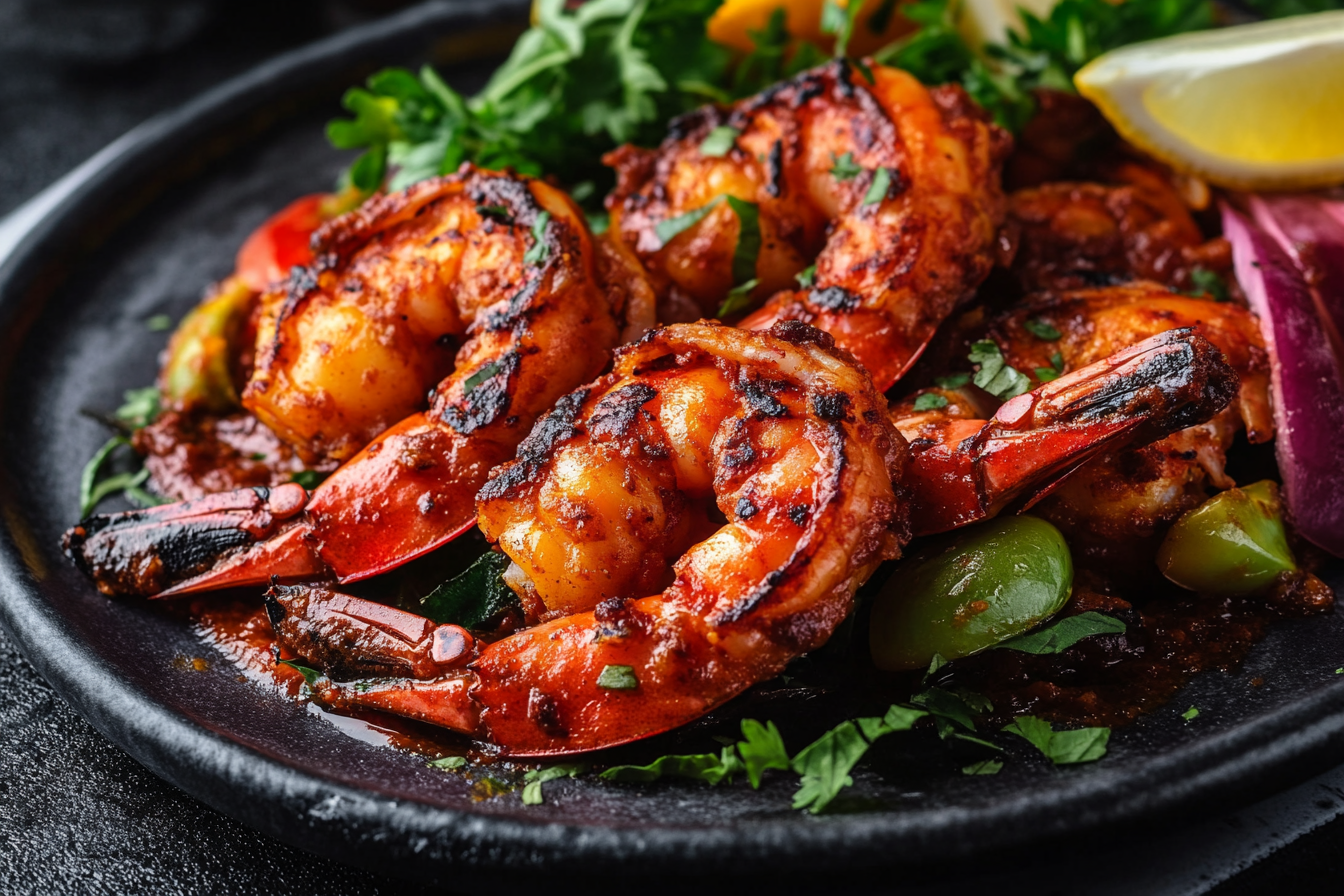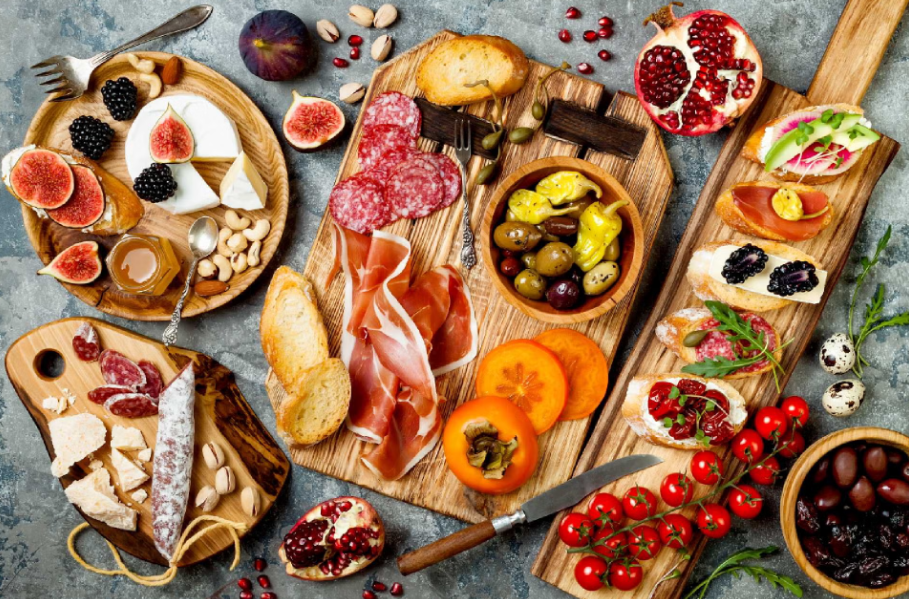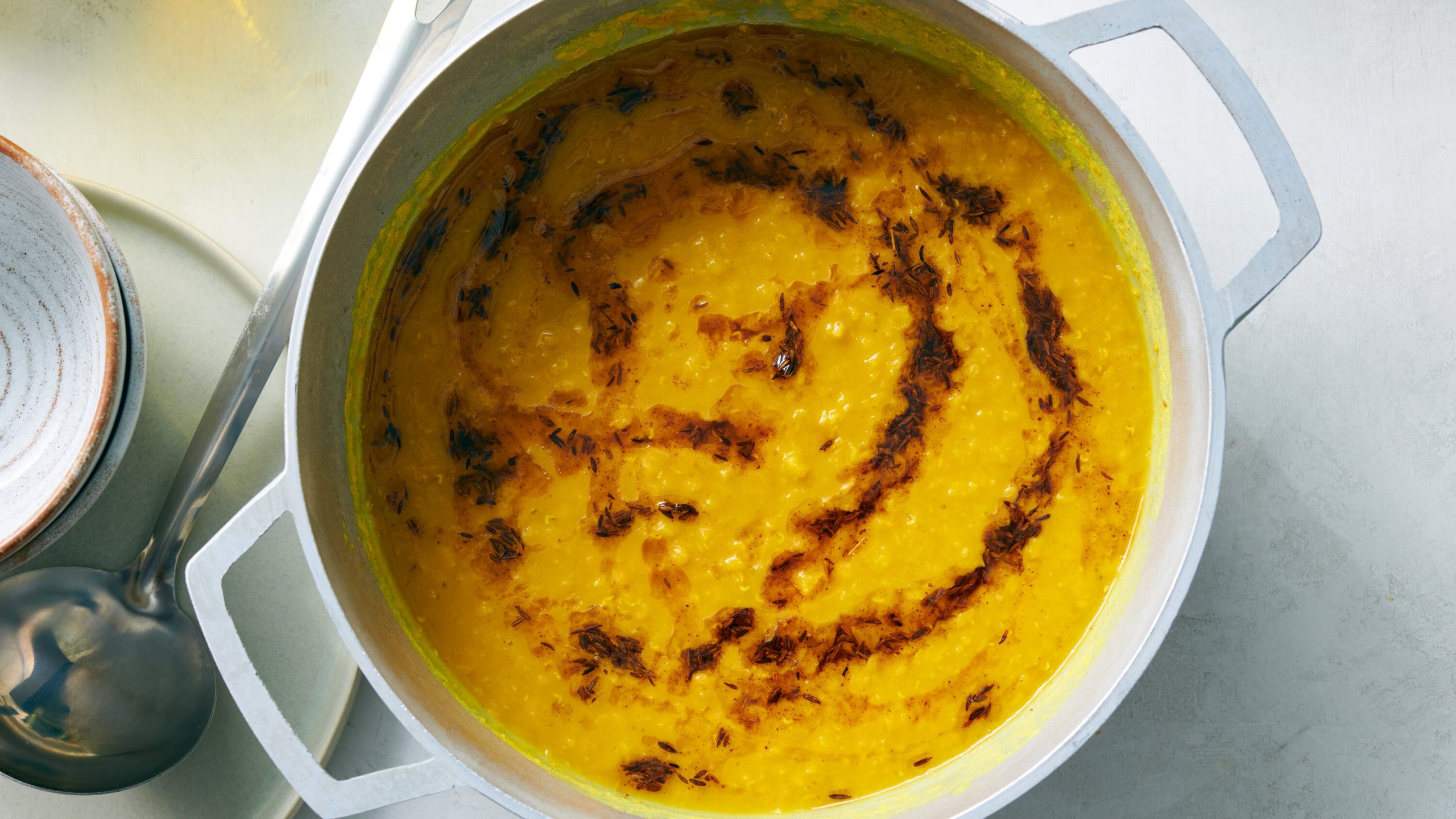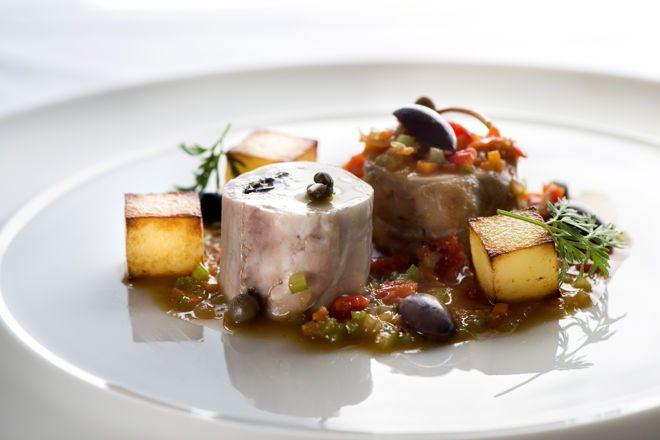Tandoori Prawns are a mouthwatering seafood dish that showcases the delicious combination of marinated prawns and the distinct smoky flavor imparted by cooking them in a tandoor (a traditional clay oven). This dish is a favorite at Indian restaurants and is often served as an appetizer or main course, bringing a burst of flavors with every bite. The prawns are marinated in a flavorful blend of spices, yogurt, and herbs, before being grilled to perfection, resulting in tender, juicy, and slightly charred seafood.
In this article, we’ll explore the history of Tandoori Prawns, the key ingredients, the marination process, and how you can recreate this popular dish at home—whether you have access to a tandoor or not.
The Origins of Tandoori Prawns

The term “tandoori” refers to cooking in a tandoor, which is a cylindrical clay oven used in Indian cooking. The tandoor imparts a smoky flavor and cooks food quickly at very high temperatures, making it ideal for grilling meats, seafood, and breads. While Tandoori Chicken is the most famous tandoori dish, Tandoori Prawns have gained popularity over the years due to their tender texture and rich flavor profile.
The origins of tandoori cooking date back over 500 years in India. The technique likely came to India with the Mughal Empire, where meats, poultry, and breads were traditionally cooked in clay ovens. Over time, the tandoor became an integral part of Indian cooking, evolving into a method that can be used to cook not only meats but also seafood and vegetables.
Tandoori Prawns are typically found in Indian cuisine and Pakistani cuisine, but their popularity has spread worldwide. The delicious combination of spices and smokiness from the tandoor has made this dish a hit in many international settings, particularly in Indian restaurants.
Key Ingredients in Tandoori Prawns
The star of the dish, of course, is the prawns (or shrimp, depending on your preference). The prawns are marinated in a mixture of yogurt, spices, and herbs, which tenderize the meat and infuse it with flavor. Here are the essential ingredients that go into a classic Tandoori Prawn marinade:
- Prawns: Fresh, large prawns are ideal for this dish. They should be peeled and deveined, leaving the tails intact for a nice presentation.
- Yogurt: Full-fat plain yogurt acts as the base for the marinade. It helps to tenderize the prawns while also imparting a creamy texture.
- Ginger and Garlic: Fresh ginger and garlic provide a sharp, aromatic base flavor in the marinade.
- Tandoori Masala: This is a spice blend that gives Tandoori Prawns their distinctive flavor. It includes ingredients such as cumin, coriander, turmeric, garam masala, and chili powder. You can buy tandoori masala pre-made, or make your own by combining these spices.
- Lemon Juice: The tangy acidity of lemon juice balances the richness of the yogurt and enhances the flavor of the prawns.
- Cilantro/Coriander: Fresh cilantro adds a burst of freshness and color to the marinade and the finished dish.
- Salt and Oil: Salt enhances the overall flavor, and a little oil helps the marinade to coat the prawns evenly.
The Marination Process
The key to making flavorful Tandoori Prawns lies in the marination process. The prawns absorb the spices, yogurt, and herbs, which results in a tender, flavorful, and juicy texture. Here’s how to properly marinate the prawns:
-
Prepare the Prawns: Start by cleaning the prawns. Peel and devein them, leaving the tails intact for presentation. Pat the prawns dry with a paper towel to remove excess moisture, as this will help the marinade adhere better.
-
Make the Marinade: In a bowl, combine the yogurt, tandoori masala, ginger, garlic, lemon juice, cilantro, and salt. Whisk the ingredients together until you have a smooth, thick marinade. If the marinade is too thick, you can add a tablespoon of water or oil to achieve the desired consistency.
-
Coat the Prawns: Add the prawns to the marinade and coat them evenly. Make sure each prawn is covered in the marinade, and gently massage it into the flesh. You can make small incisions in the prawns with a knife to help the marinade penetrate deeper.
-
Let It Marinate: Cover the bowl with plastic wrap and let the prawns marinate in the fridge for at least 30 minutes to 2 hours. For maximum flavor, marinate them overnight. The longer they marinate, the more flavor they will absorb.
Cooking Tandoori Prawns
Traditionally, Tandoori Prawns are cooked in a tandoor, but you can easily recreate this dish in a regular oven, grill, or even a stovetop grill pan. Here are a few methods to try:
1. Cooking in a Tandoor (Traditional Method)
- Preheat the tandoor to a high temperature (around 450-500°F).
- Thread the marinated prawns onto skewers, ensuring that they are spaced out so they cook evenly.
- Place the skewers in the tandoor and cook for about 4-6 minutes, turning the skewers occasionally to ensure even cooking. The yowestogel prawns should be cooked through, with a slight char on the edges.
2. Cooking in an Oven
- Preheat the oven to 400°F (200°C) and line a baking sheet with foil or parchment paper.
- Thread the prawns onto skewers or arrange them directly on the baking sheet.
- Bake for about 8-10 minutes, or until the prawns turn pink and opaque. You can also broil them for the last 1-2 minutes to get a nice char on top.
3. Cooking on a Grill
- Preheat the grill to medium-high heat.
- Thread the marinated prawns onto skewers and place them on the grill.
- Grill the prawns for 3-4 minutes per side, until they are cooked through and lightly charred on the edges.
4. Cooking on a Stovetop Grill Pan
- Heat a grill pan over medium-high heat.
- Arrange the prawns in a single layer in the pan, making sure they are not overcrowded.
- Grill for 2-3 minutes per side, until the prawns turn golden brown and are cooked through.
Serving Tandoori Prawns
Once the prawns are perfectly grilled, serve them immediately with your favorite sides and dipping sauces. Tandoori Prawns are typically accompanied by:
- Mint Yogurt Chutney: A refreshing and cooling dip made from yogurt, mint, and spices, which complements the heat and smokiness of the prawns.
- Naan or Roti: Soft, pillowy flatbreads that can be used to scoop up the prawns or dip into the chutney.
- Lemon Wedges: A squeeze of fresh lemon juice adds a burst of acidity that balances the richness of the prawns.
- Fresh Salad: A side of fresh cucumber, onions, and tomatoes can provide a crunchy contrast to the grilled prawns.
Variations of Tandoori Prawns
While the traditional recipe is already packed with flavor, you can experiment with different marinades and ingredients to create variations:
- Spicy Tandoori Prawns: Add extra cayenne pepper or chili powder to the marinade for a spicier kick.
- Coconut Tandoori Prawns: Add a tablespoon of coconut milk or grated coconut to the marinade for a creamy, tropical flavor.
- Herb-Infused Tandoori Prawns: Add fresh herbs like cilantro, mint, or curry leaves for a fragrant, herbaceous twist.
Conclusion
Tandoori Prawns are a delectable dish that combines the rich flavors of Indian spices with the natural sweetness of prawns, all complemented by the smoky taste of grilling in a tandoor. The process of marinating prawns in a mix of yogurt, spices, and herbs, followed by grilling, creates a dish that is juicy, tender, and bursting with flavor. Whether served as an appetizer or as part of a larger meal, Tandoori Prawns are sure to be a crowd-pleaser.
Try making this grilled sea-food delicacy at home, and enjoy the irresistible flavors of India right at your dinner table!






